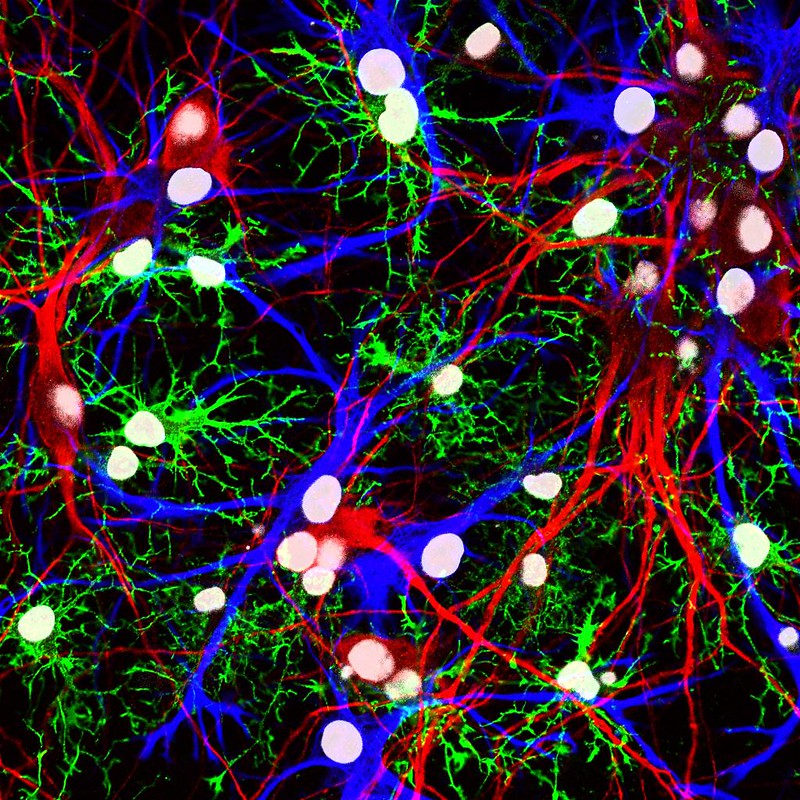10.3: Plasticity: Experiences Can Alter the Brain

The responses of specific neural regions may be modified by experience. For example, the front shell of the nucleus accumbens is generally involved in appetitive behaviors, such as eating, and the back shell is generally involved in fearful defensive behaviors (Reynolds & Berridge, 2001, 2002). Research using human neuroimaging has also revealed this front–back distinction in the functions of the nucleus accumbens (Seymour et al., 2007). However, when rats are exposed to stressful environments, their fear-generating regions expand toward the front, filling almost 90% of the nucleus accumbens shell. On the other hand, when rats are exposed to preferred home environments, their fear-generating regions shrink, and the appetitive regions expand toward the back, filling approximately 90% of the shell (Reynolds & Berridge, 2008).
Media Attributions
- Neurons and glia © Flickr is licensed under a CC BY (Attribution) license

